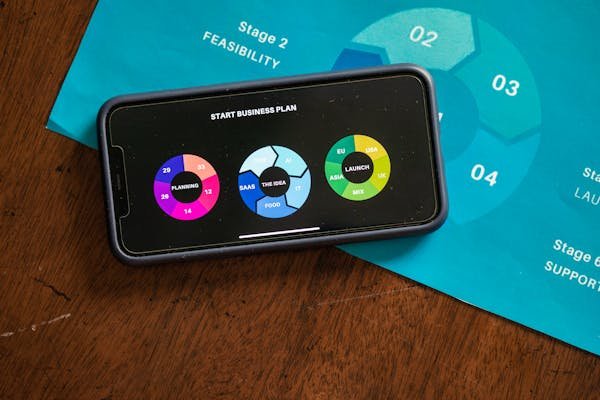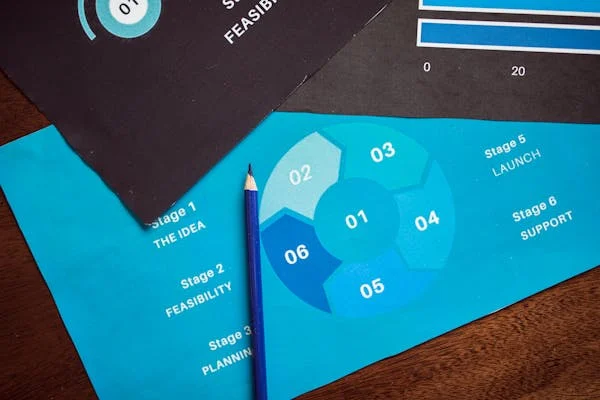Customer Lifetime Value (LTV) is one of the most important numbers any SaaS or subscription business should track. It tells you how much revenue you can expect from a customer over the time they stay with you. But not all business models see the same patterns. In this guide, we’ll break down real-world LTV benchmarks across B2B SaaS, B2C subscriptions, and more.
1. Median LTV for B2B SaaS companies is approximately $35,000
What this means for your business
For B2B SaaS companies, $35,000 is considered the typical customer LTV. That means over the lifespan of the relationship, the average B2B client will pay this amount. But remember, this number includes both high-end enterprise customers and small businesses, so there’s a range hiding under that average.
If you’re building a SaaS product for business users and your LTV is far below this, it’s time to dig into why. It could be due to short customer lifespans, low pricing, or weak retention. On the flip side, if you’re above this number, you’re likely targeting larger accounts, which comes with higher expectations and support needs.
How to apply this benchmark
Use this $35,000 figure as a north star. Are your customers currently spending $1,000 per year and leaving after 2 years? That’s an LTV of $2,000—far from the benchmark. You might need to improve your onboarding or add features that justify a price increase. You can also use this number to reverse-engineer your CAC (Customer Acquisition Cost). If your CAC is $10,000, and your LTV is $35,000, you’re in a healthy place.
Start by:
- Analyzing your churn rate
- Looking at your upsell and cross-sell potential
- Considering a price realignment if your LTV is way below this range
2. Median LTV for B2C subscription businesses is around $850
Lower LTV doesn’t mean weak business
The B2C subscription world runs on volume. Compared to B2B, the average LTV is much lower—roughly $850. But that’s fine, because acquisition costs are usually lower too. If you’re running a B2C subscription business, your growth depends on how quickly you can scale customer volume while keeping churn low.
Fitness apps, meditation tools, language learning subscriptions—most of them operate on this model. Their pricing is usually monthly, affordable, and relies on scale, not large individual contracts.
Action steps for B2C founders
Your job is to make sure your LTV is higher than your CAC, ideally by 3x. With an $850 average LTV, your acquisition costs should sit comfortably under $300 per user. If you’re using Facebook or Google Ads, this can get tight quickly.
To increase your LTV:
- Focus on reducing churn in the first 90 days
- Consider annual billing to raise average spend
- Add upsell features like premium content or courses
Most of your work in B2C should center around retention. Small gains here can have big effects on your lifetime value.
3. SaaS companies with annual contracts have 1.8x higher LTV than those with monthly contracts
Why contract structure matters
There’s a big LTV difference between monthly and annual contracts. On average, annual billing boosts LTV by 80%. That’s huge. It makes sense, too—annual customers are less likely to churn, and you lock in more cash up front.
When customers commit to a year, they’re more likely to fully onboard, adopt your product, and integrate it into their daily workflow. In contrast, monthly users often churn before they hit your product’s “aha” moment.
How to transition from monthly to annual
If you haven’t already, offer an annual plan with a clear value incentive. That could be a 20% discount or a bonus feature. Don’t just bury it in your pricing table. Promote it during onboarding, inside your product, and even via email nudges.
More tactics:
- Add a toggle on your pricing page between monthly and annual
- Incentivize your sales team to close annual contracts
- Build tools that make onboarding smoother for long-term use
One word of caution: don’t push annual too early if your product still has major usability issues. Locking users into a product they’ll hate will backfire in the long run.
4. Companies with Net Dollar Retention >120% report 2.5x higher LTV
Why retention plus expansion equals power
Net Dollar Retention (NDR) measures how much your existing customers spend over time. If your NDR is 120%, it means on average, customers are paying 20% more each year—even after accounting for churn.
Companies with NDR over 120% often double or triple their LTV. That’s because happy customers upgrade, add seats, or buy new features. And those upsells add up fast.
How to increase NDR (and LTV)
First, know your baseline. If you’re not tracking expansion revenue and churn together, start now. Next, build a customer success team that focuses on adoption, not just support.
To drive expansion:
- Add tiered pricing that encourages upgrades
- Make usage-based pricing easy to understand
- Offer account reviews that highlight value
The best part? High NDR compounds. A customer who pays you $10,000 this year and grows 20% yearly will pay you over $26,000 by year three.
5. LTV for enterprise SaaS customers often exceeds $100,000
The enterprise playbook is different
Enterprise customers aren’t just buying your product—they’re investing in a relationship. Deals take longer, but once they’re in, they stay longer and pay more. LTVs here often exceed $100,000 and can go much higher depending on seat count, integrations, and contract renewals.
But with high LTV comes high CAC. Enterprise sales often take months and involve security reviews, multiple stakeholders, and legal red tape. You’ll need a strong sales team, detailed onboarding, and a roadmap that evolves with their needs.
How to win in enterprise
If you’re aiming for this segment, everything from your messaging to your sales team needs to shift. Focus on ROI-based selling, compliance support, and integrations with their tech stack.
Steps to grow LTV in this space:
- Use account managers to drive expansion
- Invest in enterprise-ready features (SSO, SOC 2, APIs)
- Consider multi-year contracts to lock in value
Don’t forget: onboarding is critical here. If your product flops in the first 60 days, that six-figure LTV never materializes.
6. Freemium SaaS models typically show LTVs 30–50% lower than sales-led models
Freemium is a volume game
Freemium models are great for getting people in the door. They lower the barrier to entry and let users explore your product risk-free. But they come at a cost—lower LTV. Freemium users pay nothing at the start, and most never upgrade. That’s why freemium businesses often report LTVs 30–50% lower than their sales-led peers.
The key challenge? Monetizing free users. If your conversion rate from free to paid is low, your overall revenue per user stays small. That pushes your LTV down and puts more pressure on your growth engine.
Making freemium work
If you’re going freemium, don’t just focus on signups. You need to map the journey from free to paid. That means finding the right paywalls, offering clear upgrade paths, and identifying the features that drive stickiness.
To increase LTV in a freemium model:
- Track time-to-upgrade closely
- Move core value features behind the paywall
- Use usage triggers (e.g., file limits, user caps) to nudge upgrades
You can also test a free trial instead of permanent free access. This encourages deeper engagement early and leads to stronger conversions. Freemium works best when paired with high virality or large user bases. If you don’t have either, your LTV will struggle.
7. Companies with churn below 5% annually see 3x higher LTV than those with higher churn
Low churn is the ultimate growth driver
There’s no getting around it—churn kills LTV. A company with 5% annual churn (which is excellent) will retain customers for far longer than one losing 5% per month. That difference shows up fast in your LTV calculations.
The math is simple. A customer paying $10,000 a year and sticking around for 7 years will deliver far more value than one who leaves after 12 months. And the better your retention, the less you need to rely on expensive acquisition to grow.
How to improve retention (and boost LTV)
If your churn is high, first ask why. Is your product under-delivering? Are customers unclear on how to use it? Do they hit roadblocks that drive frustration?
Some quick wins to lower churn:
- Tighten your onboarding to get users to value faster
- Monitor in-app usage and intervene early with low-usage accounts
- Offer customer success support before problems arise
You can also add features like in-app training, milestone check-ins, and renewal incentives. The longer your customers stay, the more chances you get to increase their value.
8. Product-led growth companies show LTVs around $15,000–$25,000 on average
PLG means self-serve, but not low-value
Product-led growth (PLG) businesses let users discover, try, and buy without talking to sales. It’s a self-serve model that often scales fast—but it doesn’t mean the LTV is small. In fact, PLG companies report average LTVs between $15,000 and $25,000, especially when paired with usage-based pricing or tiered plans.
These businesses usually start with smaller contracts and grow accounts over time. Users adopt on their own, fall in love with the product, and then expand their usage naturally.
How to optimize PLG for higher LTV
To grow LTV in PLG, you need to build for activation and expansion. This means:
- Onboarding flows that highlight value fast
- Clear upgrade paths inside the product
- Pricing that aligns with user success (like usage tiers)
You can also use product signals to trigger outreach. For example, if a user adds five team members, that’s a great time for a sales-assisted upgrade.
PLG isn’t just about skipping sales—it’s about using your product as the main sales channel. If users are staying and expanding, your LTV will grow steadily.
9. LTV for customers acquired via inbound marketing is 16% higher than outbound
Warm leads make better customers
Inbound marketing—things like content, SEO, webinars, and email nurturing—brings in users who already have interest and context. They come in on their own terms, not through cold emails or aggressive outreach. As a result, they tend to stick around longer and spend more.
On average, inbound-acquired customers have a 16% higher LTV than outbound-acquired ones. That doesn’t mean outbound is bad—it just shows that when customers educate themselves, they’re more likely to engage fully.
Getting more value from inbound
If you’re already investing in inbound, track not just lead volume but LTV by channel. You might find your blog is generating longer-lasting customers than your paid ads.
To increase inbound LTV:
- Create content that speaks to deeper pain points
- Use lead magnets that attract qualified users, not just traffic
- Build onboarding that continues the education your content started
Also, make sure there’s a feedback loop between your marketing and product teams. When content aligns with product value, you attract the right customers—and that’s what boosts LTV.
10. LTV in fintech SaaS averages around $20,000–$40,000
Fintech buyers are sticky—but demanding
If you’re in fintech SaaS, you’re likely dealing with sensitive data, strict compliance, and high switching costs. The good news? Customers tend to stay. That’s why fintech LTVs are often higher than general SaaS—ranging from $20,000 to $40,000 on average.
Fintech users include banks, startups, insurance companies, and more. They integrate deeply with your systems and don’t churn easily. But that loyalty comes with high expectations. They want reliability, security, and clear ROI.
How to grow LTV in fintech SaaS
Because your users are making big decisions with your product, trust is everything. You need to show stability, compliance, and performance every step of the way.
To boost LTV:
- Offer multi-product bundles (like analytics + payments)
- Build features that encourage deeper integration
- Layer in account management and proactive support
Fintech also benefits from usage-based pricing. If your tool helps process payments, track transactions, or manage portfolios, tie your pricing to activity. As users grow, your revenue—and LTV—grows with them.
11. Median LTV to CAC ratio for successful SaaS companies is 3:1
Why this ratio matters more than raw numbers
A high LTV is great. But it means little if you’re spending too much to acquire each customer. That’s why the LTV to CAC ratio is a key metric. A 3:1 ratio is widely accepted as the sweet spot for healthy SaaS businesses. In simple terms, it means for every $1 spent on customer acquisition, you’re earning $3 back over the customer’s lifetime.
This ratio keeps your business sustainable. If your CAC gets too close to your LTV, you may grow revenue but not profit. If your CAC is too low, you might be under-investing in growth.
Hitting and maintaining a 3:1 ratio
Start by calculating your real CAC—not just ad spend, but salaries, tools, and overhead related to customer acquisition. Then compare that to your true LTV (factoring in churn and upsells). If the ratio is below 3:1, look at ways to:
- Lower CAC through better targeting and inbound marketing
- Increase retention to extend customer lifespan
- Boost average revenue through pricing or expansion
This ratio also helps you make smart decisions about scaling. If you can consistently hold or improve your 3:1 ratio, you’re ready to invest more in acquisition.
12. High-growth SaaS firms often target LTV/CAC ratios of 5:1
When a higher ratio means high-margin growth
While 3:1 is a healthy benchmark, many high-growth SaaS companies target 5:1. Why? Because this gives them a large buffer. It means their acquisition efforts are highly efficient and their customers are incredibly valuable over time.
A 5:1 ratio also helps attract investors. It signals that you have room to scale and strong product-market fit. But there’s a tradeoff—if your ratio is too high for too long, it might mean you’re under-investing in marketing.
Balancing growth and margin
If you’re seeing a 5:1 or higher ratio, ask yourself: is this the result of excellent retention and upsells, or am I not spending enough on growth?
You can:
- Explore new paid channels with higher CAC but good volume
- Push harder on product-led onboarding to speed up adoption
- Test outbound if inbound is maxed out
Just be careful not to sacrifice quality. High ratios should come from real value, not just tight marketing budgets. Maintain strong customer success to protect the LTV side of the equation.
13. LTV for e-learning subscriptions averages around $700–$1,200
Education subscriptions need retention more than anything
E-learning platforms—think language learning, test prep, or skill development—often see LTVs in the $700 to $1,200 range. These platforms usually charge a monthly or annual fee and rely on long-term engagement to drive value.
The problem? Motivation fades. People start strong but often drop off after a few months. That makes churn a big challenge, and it caps LTV unless you address it early.
Making learning stick (and LTV grow)
The goal is to keep learners motivated beyond the first few sessions. That’s where onboarding, reminders, and progress tracking come into play.

To push LTV higher:
- Use milestone emails to celebrate user achievements
- Send “nudge” notifications when usage drops
- Unlock content gradually to build habit loops
You can also upsell certifications or premium content. The longer a user stays, the more likely they are to pay for additional value. Build your platform to grow with the user’s learning journey—not just provide content.
14. Streaming services like OTT platforms have average LTVs between $150–$300
Volume is king in media subscriptions
Streaming platforms like video or music services typically work on a low-price, high-volume model. They charge $10–$20 per month and rely on scale to hit revenue goals. That’s why their average LTV tends to fall between $150 and $300.
The key metric here is churn. If users stay for 6–12 months, you’re already in that LTV range. But in this space, competition is fierce. Users bounce quickly when content dries up or price goes up.
Driving retention in entertainment
Your content library is your product. So the more regularly you add fresh content, the more reasons users have to stick around. Predictable drops in content engagement lead to LTV decline.
To lift LTV:
- Use personalization to keep users engaged
- Offer “pause plans” to prevent full cancellations
- Roll out original or exclusive content to keep users hooked
LTV is also impacted by multi-device access and user profiles. The easier it is for a household to share and watch anywhere, the longer they’ll stay subscribed. Keep the experience seamless.
15. Vertical SaaS (industry-specific) tends to show LTVs 20–40% higher than horizontal SaaS
Niche wins loyalty
Vertical SaaS targets a specific industry—like software for dentists, construction firms, or restaurants. These businesses tend to see 20–40% higher LTV than horizontal SaaS, which targets broader use cases like CRM or payroll.
Why the boost? Vertical SaaS solves highly specific problems. That means less competition, stronger product-market fit, and harder switching. Once customers are in, they rarely leave.
Winning with vertical focus
If you’re building for a niche, go deep. Understand every pain point, workflow, and regulation in your target industry. That lets you deliver features your competitors can’t match.
Ways to increase LTV in vertical SaaS:
- Build integrations with industry-specific tools
- Offer compliance support or reporting features
- Provide templates or data sets tailored to the field
Also, consider customer communities. When users talk to each other about your product within their industry, retention grows and LTV follows. Your job is to become the tool they can’t run their business without.
16. Subscription e-commerce companies average LTVs of $250–$500
Small ticket, big potential
In the subscription e-commerce space—think meal kits, grooming boxes, or vitamins—the average LTV usually falls between $250 and $500. These businesses often run on monthly shipments, and customer loyalty is everything. Even a few extra months of retention can double your LTV.
The challenge is, churn is high. People try something once, cancel quickly, or pause during slower months. That makes it hard to forecast revenue unless your product becomes part of their routine.
How to increase LTV in e-commerce subscriptions
Your main goal is to get customers past the “trial” mindset and into habit. The best way to do this? Make your subscription essential or delightful enough that they don’t want to cancel.
Tactics that move the needle:
- Send reminder emails with upcoming shipments and the option to swap items
- Add loyalty rewards the longer someone stays subscribed
- Personalize boxes based on past usage or feedback
You can also use pause options instead of hard cancellations. That way, if someone needs a break, they don’t have to quit. Keeping them in the system improves your chances of long-term retention—and that’s what lifts your LTV.
17. Reducing churn from 10% to 5% annually can increase LTV by 2x
Retention is a multiplier
Here’s one of the most powerful stats in this entire guide. If you cut churn from 10% a year to 5%, your average customer stays twice as long. That means your LTV doubles—even if you never change your pricing or features.
Why? Because the value of a customer is directly tied to how long they stick around. Every extra month adds recurring revenue. That’s why churn is more than a leak—it’s a growth ceiling.
How to make that 5% churn rate a reality
Start by breaking churn into two groups: voluntary (they choose to cancel) and involuntary (failed payments or account issues). Each needs its own fix.
To reduce voluntary churn:
- Offer downgrade paths instead of full cancellations
- Reach out personally to customers who show signs of dropping off
- Make it easy to re-engage through in-product nudges
For involuntary churn:
- Use automatic payment retries
- Notify users early when cards are about to expire
- Let users update payment methods without friction
Focus on the first 90 days too. Many users leave early if onboarding is weak. By improving that experience, you improve retention—and LTV takes off.
18. Mobile-first SaaS products often report LTVs below $500
Great for reach, tricky for value
Apps that are mobile-first—like budgeting tools, habit trackers, or mobile CRMs—often struggle to push LTV above $500. That’s because users on mobile expect lower pricing, simpler interfaces, and may churn faster than desktop users.
Even with millions of downloads, turning free users into paying users is hard. And when they do pay, it’s usually in small amounts—monthly plans of $5 to $15. That caps your revenue unless you get creative.

Turning mobile into a growth engine
If your LTV is stuck below $500, there are still ways to raise it without changing your whole business model.
Some things that work well:
- In-app upsells for features like cloud sync or advanced reports
- Family or team plans for shared access
- Annual pricing plans with onboarding bonuses
Also, try pushing mobile users to desktop where possible. Many businesses find users are more likely to upgrade on web, even if they discover the product on mobile. A seamless cross-device experience lets you guide them toward higher value.
19. Subscription productivity apps typically report LTVs of $100–$300
High churn meets low pricing
Productivity apps—think to-do lists, calendars, or note-taking tools—are popular, but usually low in LTV. Customers pay between $5–$10 a month, and often cancel once the novelty wears off. That’s why most of these businesses see LTVs in the $100–$300 range.
The problem is not acquisition—many of these tools go viral. The issue is getting users to stay long enough and pay regularly. If your product doesn’t become a daily habit, churn kicks in quickly.
Making productivity sticky
The key is to build features that go beyond simple checklists. You need depth and flexibility—something that grows with the user.
To drive longer retention:
- Allow users to customize their workspace or dashboard
- Integrate with tools they already use (email, calendar, cloud)
- Gamify the experience to keep momentum
Another smart move is targeting teams. If you’re only serving individual users, you’re limiting your LTV. But if you create collaboration tools or admin controls, you can charge more and keep accounts longer.
20. Higher onboarding completion rates correlate with 40–60% higher LTV
First impressions matter
This stat can’t be overstated—when users complete onboarding successfully, their LTV shoots up. Businesses that guide new customers through setup, activation, and early wins often see 40–60% higher lifetime value.
Onboarding isn’t just a checkbox. It’s your best chance to set expectations, showcase value, and reduce early churn. If people get confused or stuck in those first sessions, they might never return.
How to improve onboarding and lift LTV
The goal is simple: help users succeed fast. Your product may be complex, but their first steps shouldn’t be. Give them a guided path. Use tooltips, checklists, and videos to show exactly what to do next.
Best practices to consider:
- Ask only for essential info up front—avoid long forms
- Personalize the onboarding based on the user’s goals or role
- Offer in-app live chat or support for the first week
Track where users drop off in the flow and fix those points. Every small increase in completion rate can mean thousands more in LTV over time.
21. SaaS platforms with strong upsell motion see LTVs up to 2x baseline
The hidden growth lever
Many SaaS companies focus only on the initial sale. But the real money is made after the first contract. Platforms that actively upsell—whether it’s more users, advanced features, or premium support—can double their customer LTV compared to those that don’t.
Why does upselling work so well? Because existing customers already trust your brand. They’ve integrated your product into their workflow. Adding value through expansion feels natural—and often requires far less persuasion than landing a brand-new account.

Building an upsell machine
Upsells don’t happen by accident. You need systems in place that spot expansion opportunities and present them at the right time.
Here’s how to do that:
- Use product usage data to identify upgrade-ready accounts
- Train your success team to pitch upsells during check-ins or QBRs
- Design pricing tiers that unlock real value, not just features
Also, test in-app prompts. If a customer hits a usage limit or tries to access a premium feature, make the upgrade path smooth. The easier it is to say yes, the higher your LTV climbs.
22. High-touch onboarding models drive 1.5–2x higher LTV than self-serve
Personal guidance boosts value
When users get one-on-one attention during onboarding—whether via calls, walkthroughs, or dedicated success managers—they tend to stay longer. High-touch onboarding is especially powerful for mid-market and enterprise clients.
In fact, companies that use this model often see LTVs 1.5 to 2 times higher than those relying solely on self-serve setup. It’s not just about handholding—it’s about tailoring the experience, reducing friction, and accelerating adoption.
When and how to use high-touch onboarding
This approach isn’t for every user. For low-ticket customers, it’s not cost-effective. But for larger accounts, it’s well worth the time.
To get the most from high-touch onboarding:
- Segment your users by contract size and assign onboarding accordingly
- Offer live training sessions and recordings for repeatability
- Use checklists and shared timelines to keep the process structured
Your onboarding specialists should also introduce expansion paths early. That plants the seed for upsells later and sets the tone for a long-term relationship.
23. Adding usage-based pricing can increase LTV by 20–30%
Pay-as-you-grow drives expansion
Usage-based pricing (UBP) has become one of the most effective ways to increase LTV. Instead of flat fees, customers pay based on what they consume—be it API calls, seats, storage, or transactions.
This model aligns pricing with customer success. As users grow or adopt more of your platform, they naturally spend more. It also removes barriers to entry for smaller users who can start cheap and scale up over time.
Designing smart usage-based pricing
You don’t need to go 100% usage-based. Many SaaS companies use a hybrid model—flat fee plus overage or metered billing.
To make it work:
- Choose metrics that align with product value and can’t be gamed
- Be transparent with pricing and usage dashboards
- Set alert thresholds so customers aren’t shocked by sudden increases
Also, educate customers on how their usage impacts pricing. When customers see value growing alongside cost, they’re less likely to churn—and more likely to expand.
24. The average LTV of a customer acquired via paid search is 12% lower than via referral
Not all channels bring equal value
Paid search can bring in high volumes of traffic. But it often delivers users who are less engaged or more price-sensitive. That’s why customers acquired this way typically have a 12% lower LTV than those who come through referrals.
Referrals, on the other hand, come from trusted sources. These users arrive with context, trust, and higher intent. They tend to stick around longer and engage more deeply.

Optimizing acquisition for LTV, not just volume
If your paid search LTV is low, don’t just blame the channel—look at your targeting and post-click experience.
Here’s what you can do:
- Refine keyword targeting to attract problem-aware, high-intent users
- Improve landing pages to better qualify prospects before signup
- Offer rewards or incentives for referral programs to increase organic growth
Also, build systems to track LTV by channel. Knowing where your highest-value customers come from helps you double down on what works—and improve or retire what doesn’t.
25. SaaS businesses with annual billing see 40% higher LTV than monthly
Bigger commitment, bigger return
Annual billing does more than smooth out cash flow—it boosts LTV. When customers pay for a full year up front, they’re more likely to stay engaged, onboard thoroughly, and integrate your product into their day-to-day.
Compared to monthly plans, annual subscriptions reduce churn and increase the total value each customer brings in—by up to 40%. It’s one of the simplest levers you can pull to raise LTV without changing your core product.
How to drive more annual signups
Start by offering a clear incentive. A 10–20% discount is standard, but sometimes positioning is more important than price. Frame annual plans as the default or preferred option.
You can also:
- Highlight long-term ROI and value in your sales messaging
- Use onboarding flows to promote switching to annual early
- Offer upgrades or bonuses (like priority support) with annual billing
Annual customers give you breathing room to build long-term relationships. And with stronger retention, your LTV climbs steadily over time.
26. Cohorts with >50% feature adoption report 60–80% higher LTV
Depth of usage predicts value
It’s not enough for customers to sign up—they need to actually use what you’ve built. The more features they adopt, the more likely they are to stay, expand, and grow into long-term accounts. When more than half of your product’s core features are used regularly, those customers often show 60–80% higher LTV.
That’s because deep adoption signals high dependency. When your tool becomes central to a workflow, replacing it is painful. That’s where retention and expansion come from.
Driving feature adoption systematically
You don’t need to push every feature all at once. Instead, guide users through layers of value over time.
Here’s how to make that happen:
- Use onboarding flows to introduce basic functionality
- Employ in-app prompts or tooltips to highlight advanced tools later
- Run customer education campaigns—videos, webinars, or toolkits
Track adoption metrics by cohort and map usage patterns. If some features are being ignored, dig into why. Sometimes it’s UX friction. Sometimes it’s unclear value. The more you align features with outcomes, the more your LTV will rise.
27. Retention past the first 90 days increases expected LTV by 3x
Survive the drop-off, win the lifetime
The first 90 days are critical. Most churn happens here. If a user makes it past that point, your odds of keeping them for the long haul skyrocket. In fact, users who stay beyond the first 3 months are worth 3x more than those who don’t.
That’s because those early weeks set the tone. It’s when users decide whether your product solves their problem—or just adds noise.

How to protect your first 90 days
Start by understanding when and why early churn happens. Then, build triggers and checkpoints to keep users engaged during that window.
You can:
- Send behavior-based email nudges when engagement drops
- Offer concierge support for new users in high-value plans
- Build “quick win” experiences that show value in week one
Also, reinforce wins. If a user creates something, completes a setup, or reaches a milestone, celebrate it. These small rewards keep momentum going—and that’s what leads to retention and higher LTV.
28. Mature SaaS businesses (post-Series C) report LTVs exceeding $75,000
Scale changes everything
As SaaS companies mature, their unit economics improve. They move upmarket, expand offerings, and improve retention—all of which push LTV higher. By the time a company reaches Series C and beyond, it’s not unusual to see average LTVs of $75,000 or more.
That’s not just because of larger deals. Mature companies have more refined onboarding, stronger expansion motions, and brand recognition that reduces churn.
What growing SaaS companies can learn
Even if you’re early-stage, you can still build for long-term LTV growth. It starts with getting the basics right—activation, retention, and expansion.
Here’s what to borrow from the big players:
- Standardize your onboarding across customer types
- Introduce Customer Success roles early, even part-time
- Invest in feedback loops to improve stickiness and reduce churn
Mature SaaS isn’t just about size—it’s about systems. If you build the right ones now, your LTV will climb as you scale.
29. SaaS with pricing tiers have 25–50% higher LTV than flat pricing models
Let customers grow with you
Flat pricing models are simple—but limiting. When every customer pays the same, you miss out on the opportunity to earn more from power users, large teams, or enterprise buyers. That’s why SaaS businesses that use tiered pricing often see 25–50% higher LTV.
Tiers give customers room to grow. They also let you package features by value and control who gets access to what. It’s a win for both sides.
Designing effective pricing tiers
Start by mapping your features to real outcomes. Don’t just group them randomly. Instead, structure your tiers around types of customers or use cases.
Other tips:
- Keep the jump between tiers clear and valuable
- Avoid overwhelming with too many options
- Use your pricing page to highlight the most popular tier
Also, train your sales and support teams to spot upsell moments. If a customer is stretching the limits of their plan, that’s the perfect time to introduce the next tier—and boost your LTV.
30. Companies using dynamic pricing models report 18–22% higher LTVs
Flexible pricing means higher yield
Dynamic pricing adjusts based on customer behavior, market conditions, or usage trends. Companies that embrace it often report 18–22% higher LTV. Why? Because they can capture more value from users who are willing to pay more—without alienating price-sensitive buyers.
This approach is more common in consumer services, but it’s gaining traction in B2B SaaS too, especially in usage-heavy products.
Getting started with dynamic pricing
You don’t need to overhaul everything. Start by identifying where customers get the most value, and test flexible models there.

For example:
- Charge more for priority access or faster support
- Use pricing ladders tied to usage or seats
- Offer real-time pricing updates in high-demand periods
Transparency is key. Users need to understand what they’re paying for and why. When done right, dynamic pricing allows your business to flex with demand—while boosting LTV steadily over time.
Conclusion
LTV is more than just a financial metric—it’s a reflection of your customer relationships. Each benchmark we’ve covered in this article gives you a window into what great SaaS and subscription businesses are doing right. From onboarding and pricing to retention and expansion, there are dozens of levers you can pull to lift LTV in any model.





















